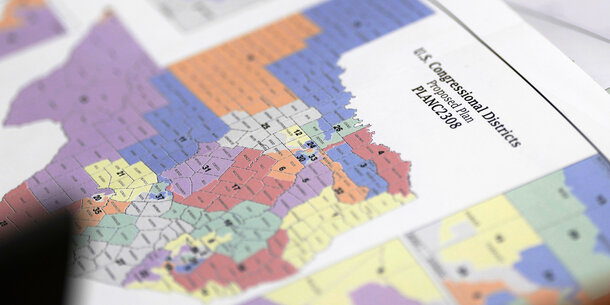The umbrella term Asian American and Native Hawaiian/Pacific Islander (AANHPI) seeks to do what seems nearly impossible: exhaustively and inclusively represent a vast diversity of people. Some people of AANHPI heritage can trace their histories in the United States nearly as far back as the Constitution. Others fled here as refugees from wars this country waged in their homelands. Many brought their talents and grit in pursuit of a better future. And for the past 20 years, Asian Americans have been the fastest-growing demographic in the country. The number of Asian Americans grew by 81 percent from 2000 to 2019 — from around 10 million to almost 19 million — and is expected to reach almost 36 million by 2060.
Regardless of where Asian Americans came from or why we are here, the history of Asian heritage in the United States has helped shape the contours of U.S. citizenship and democracy. Relatively recently, there has been progress made toward fair representation, but more changes are needed for everyone’s voices to be heard.
The fight for birthright citizenship
Since the 1700s, Asian immigrants have settled in the United States, bringing with them a yearning for a more inclusive identity and a stake in what it means to be American. As early as 1765, Filipino sailors established the first Filipino American communities in what is now Louisiana. Chinese migrants started their journeys to the United States in the 1850s, drawn by the prospect of gold and jobs. Japanese and Punjabi migrants made their way to the West Coast in the late 1800s and early 1900s to work in agriculture. As these immigrants established communities across the nation, they played a pivotal role in defining U.S. citizenship.
The Citizenship Clause of the 14th Amendment provides that “all persons born or naturalized in the United States . . . are citizens of the United States.” The clause was intended to reverse the racist holding of the Dred Scott decision that refused to grant Black Americans birthright citizenship. At the same time, Congress also debated whether the clause applied to children born of Asian and other immigrants, and courts considered several challenges on what it meant to be “born” in this country. It was Wong Kim Ark, a young man born on American soil to Chinese immigrants, who successfully fought for birthright citizenship under the 14th Amendment in 1898.
After visiting China in his twenties, Wong was denied reentry to the United States on the grounds that he was not a citizen. His fight for citizenship went all that way to the Supreme Court. Justice Horace Gray, who penned the majority opinion, wrote that the 14th Amendment, “in clear words and in manifest intent, includes the children born within the territory of the United States of all other persons, of whatever race or color, domiciled within the United States.” United States v. Wong Kim Ark remains the foundational case for birthright citizenship.
Data disaggregation and the model minority myth
As Asian Americans are increasingly impacting the future of U.S. democracy, we need more detailed and distinctive data on the full scope of our multicultural community.
Asian Americans are not a monolith. Yet federal data collection has long failed to represent our diversity or provide a comprehensive platform for Asian Americans to self-identity. “Asian American” includes individuals from over 50 ethnicities and racial subgroups who speak a multitude of languages. But under the Office of Management and Budget’s current race and ethnicity standards, which have not been updated since 1997, federal agencies are encouraged, but not required, to collect subgroup race and ethnicity data. The mandatory standards only include five minimum racial reporting categories: White, Black or African American, American Indian or Alaska Native, Asian, and Native Hawaiian or Other Pacific Islander.
The lack of detailed federal data on the Asian American community perpetuates the model minority myth by concealing pervasive disparities. Take income level, for example. In 2019, the Asian American median annual household income was $85,800 based on data from the American Community Survey, compared to $61,800 among all U.S. households. But these aggregate figures mask crucial differences across subgroups. Census Bureau data reports that Burmese Americans have an overall median income of $44,400, while Indian Americans have the highest median income of $119,000. In fact, Asian Americans face the largest wealth inequality gap in the United States by racial group. Similar disparities persist in other socioeconomic indicators, such as health outcomes and educational attainment.
Language access for voters
Federal data also directly impacts the success of voting rights protections. The Voting Rights Act requires state or political subdivisions to provide translated election materials and language assistance to voters who may face language barriers. Some states, including California and New York, have passed legislation that goes beyond the Voting Rights Act’s language access coverage. Federal and state determinations about the size and proportion of populations that will need language assistance for each state, county, or subdivision are calculated through Census Bureau data. The more nuanced census data is, the more robustly the Voting Rights Act can be enforced.
The impact of language assistance provisions is difficult to measure in isolation, but one study found that since the federal Voting Rights Act’s language access provisions were codified, Asian American and Latino voter registration and voter participation has increased in various elections nationwide. For example, after a settlement with the federal government required a California county to improve its language access policies in elections, registration rates increased by more than 20 percent for Filipino Americans and Latinos and 40 percent for Vietnamese Americans. Protecting and expanding language access is a critical tool for ensuring our communities’ engagement in democracy.
Over the last three centuries, Asian Americans have been integral to the construction of what it means to be an American. AANHPI Heritage Month allows us to celebrate the achievements of Asian Americans in paving the path for fair representation in the United States. Simultaneously, it is a reminder that there is much work to be done to address the unique challenges facing our diverse communities. Our country must embrace the pivotal role Asian Americans will continue to play in shaping our democracy. The story of American democracy is a powerful one — and we have always been a part of it.





